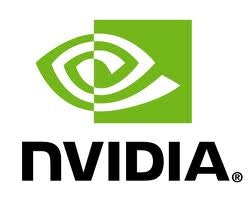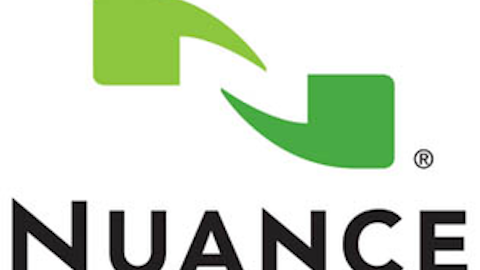
Plagued by delays
NVIDIA Corporation (NASDAQ:NVDA) has faced some high-profile product delays recently. The Tegra 4, a mobile chip and successor to the Tegra 3, was delayed in order to speed up the release of the Tegra 4i, a version with an integrated 4G LTE modem. NVIDIA likely lost some design wins due to this delay, but the integrated LTE will allow the company to better compete against market leader QUALCOMM, Inc. (NASDAQ:QCOM).
In addition to the Tegra delay, the company’s foray into handheld gaming, NVIDIA Shield, was delayed by about a month to fix a mechanical issue. Shield features the Tegra 4 chip and will cost $299 when it’s released later this month. I doubt that Shield will be a roaring success, given that it runs Android and thus features many of the same games that can be played on smartphones. I think that Shield is meant to show off the graphical power of the Tegra 4, and in that sense it will likely succeed. But I don’t think that Shield will be a game changer.
A strategic shift
What will be a game changer, however, is NVIDIA Corporation (NASDAQ:NVDA)’s decision to begin licensing its technology. This comes as the Tegra line has faced intense competition from Qualcomm, and the fact that Apple Inc. (NASDAQ:AAPL) designs its own chips and Samsung is increasingly doing so as well doesn’t help. But Apple and Samsung license graphics technology from UK-based Imagination Technologies, and if NVIDIA can take some of that business it could be a boon for the company.
Qualcomm, the dominant mobile processor company, uses its own graphics technology. But the market for NVIDIA here is basically all non-Qualcomm chips. If Apple began to license NVIDIA graphics it could give the company’s iPad a big advantage over Android-based competitors. Likewise, if Samsung licensed from NVIDIA the company might be able to take away market share from Apple. The iPad and iPad Mini account for a large percentage of the U.S. tablet market, with the high-end further dominated by Apple. NVIDIA technology could be just the edge that Samsung needs.
NVIDIA may also license its LTE modem technology, which will launch with the Tegra 4i. This poses a big threat to Qualcomm, which dominates that market. In fiscal 2012 Qualcomm posted a net income margin of 32%, an astounding number. But with competing chip makers capable of licensing NVIDIA’s graphics and modem technology, Qualcomm may lose its ability to charge premium prices. I suspect that as the market gets more competitive the profits will shift from the chip makers to the companies which license the technology.
It should be noted that Apple’s MacBook Pro line of laptops use NVIDIA Corporation (NASDAQ:NVDA) chips. Apple chooses the best components for its premium products, and this relationship could translate into a deal to put NVIDIA technology into the iPad. Although this is far from a certainty, it is a real possibility.
The resilient PC
Although the PC market is declining with many people choosing tablets over traditional form factors NVIDIA’s core business, the GPU, is thriving. In Q1 revenue for the GPU business actually grew by 8% even as PC sales declined. How is this possible? Because NVIDIA’s piece of the PC market is likely not shrinking at all.
The types of people choosing tablets over laptops or desktops use computers mainly to browse the Internet. In their case, tablets make perfect sense. But a PC gamer with a high-end graphics card isn’t going to switch to a tablet. There’s a big difference between playing Company of Heroes 2 on a gaming PC and playing Angry Birds on a tablet. While the broad PC market is in decline the part of the market that NVIDIA cares about could very well be growing. Regardless of how far technology advances a discrete PC graphics card will always be more powerful than what can be shoved into a tablet form factor.
Earlier this year NVIDIA Corporation (NASDAQ:NVDA) released the GTX Titan, a $1,000 discrete graphics card aimed at extreme gamers. Even the company was surprised by how well it sold, and the card greatly exceeded expectations. Demand for these high end cards exists and is apparently stronger than ever.
The bottom line
NVIDIA can only benefit from licensing its technology. The company has a strong core business, and Tegra’s slow roll out can be offset by a new stream of licensing revenue. If popular tablets like the iPad start having NVIDIA technology inside then the company could greatly broaden its reach into the mobile market. NVIDIA is the premier graphics company, and this decision to license its technology is a good move.
The article A Strategic Shift For This Tech Company originally appeared on Fool.com and is written by Timothy Green.
Timothy Green owns shares of NVIDIA. The Motley Fool recommends Apple and NVIDIA. The Motley Fool owns shares of Apple and Qualcomm. Timothy is a member of The Motley Fool Blog Network — entries represent the personal opinion of the blogger and are not formally edited.
Copyright © 1995 – 2013 The Motley Fool, LLC. All rights reserved. The Motley Fool has a disclosure policy.




